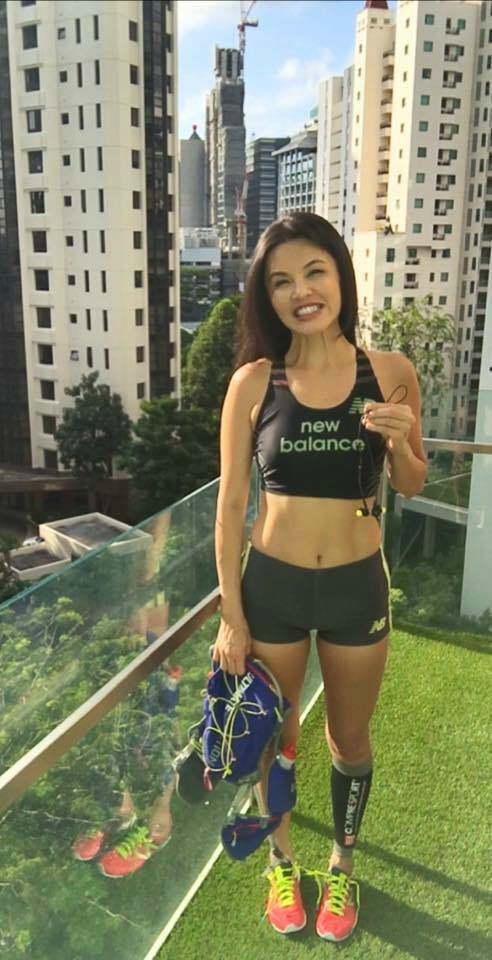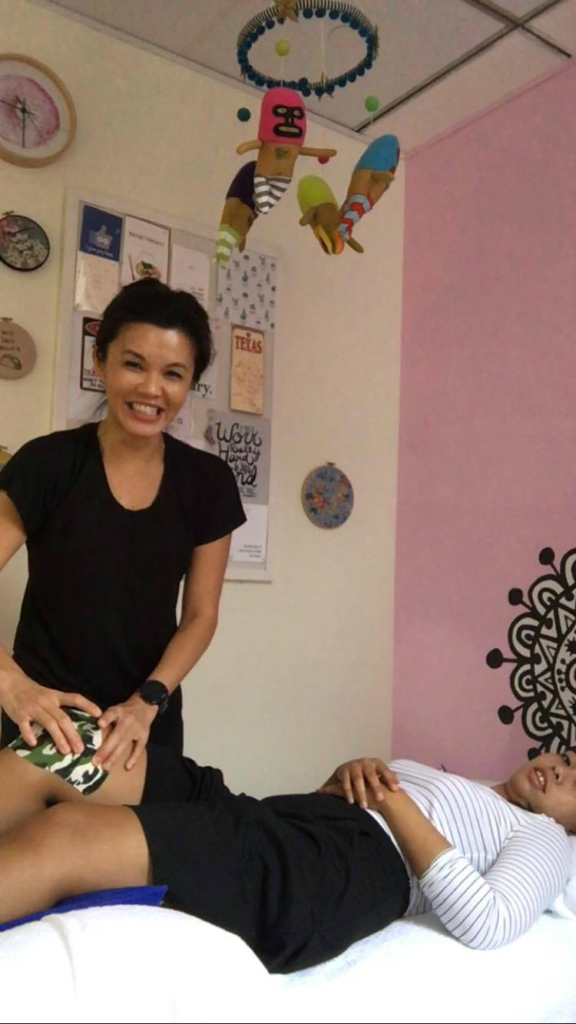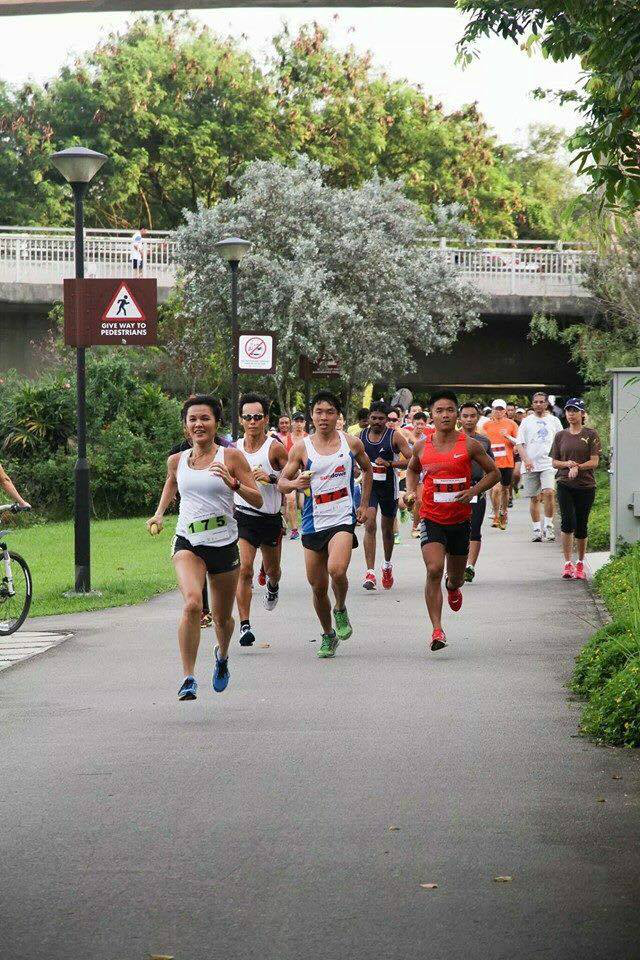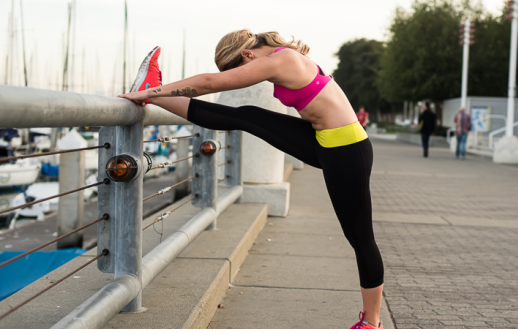Many regular runners in Singapore will probably be familiar with “Supermom” Jenny Huang, 43, a regular podium finisher at local running races as well as a full-time Senior Physiotherapist at the Urban Rehab Shaw Centre clinic.
I caught up with Jenny to find out more about running injuries and their treatment, and when is a good time to see a sports physio versus a doctor.
When to seek treatment
Jenny, whose speciality is in musculoskeletal issues, advise runners to see a sports physio if they are dealing with a persistent injury for more than one to two weeks.
Said Jenny “As long as the pain continues past two weeks after self-treatment, then go and seek professional treatment.”
She added, “Traditionally most go and see a doctor as the first portal to medical care. However either going to a doctor or a physio first, is acceptable. But choose your health care professional wisely; go to someone that exercises and believes in keeping fit as part of life, not a choice, not a hobby, but as an integral part to staying healthy.”
To see a doctor or a physio?
She lists some pointers to help runners decide whether it is best to see a doctor or a physio first. These are as follows.
- Insurance – Do you have insurance coverage and does it require a doctor’s referral prior to a physio visit to cover the costs?
- Assist in returning to running – If you are looking for a shot or a surgical procedure, it is an orthopaedic doctor you should see, but if you are looking for prescription of proper healing through movement and training, it is a physio. Says Jenny, “There is no short cut to recovery.”
- A proper exercise program – A physio can come up with individualised progression of exercises to allow proper loading and return to running
- Hands on work – Physio can handle muscles and joints to assist in recovery
- Scans – a doctor will order the scans for you and most insurance companies require doctors to order a scan versus a physio.
How does a runner know whether a physio is good? Says Jenny, “Find a physio who runs, who looks at not only your injury, but the training involved and the mental need to get you back into the game. Find one with experience in qualifications, specialisations, methods of treatment as well as availability and convenience of treatment for better compliance in going there.”
Common running injuries
In her clinic, some of the most common injuries in runners that Jenny has seen are as follows.
- Knee Pain – Caused by ITB (Iliotibial band syndrome), weak glutes, poor shoes, amongst other reasons.
Said Jenny, “We treat this with manual hands-on taping, running gait analysis and progressive strength work.” - Ankle Pain/Plantar Fascia – This can be caused by poor shoe wear, inclusive of work shoes, or increase in training intensity and compressive forces.
Said Jenny, “We treat this with dynamic walking and running foot analysis, hands-on manual skills, therapeutic ultrasound, progressive strength work and running programme analysis, as well as taping.” - Hamstring Pull – This is caused by too much speed training.
Said Jenny, “We treat it with manual hands-on work, progressive strength work and taping.”
She added, “These injuries are common in runners because running is a dynamic sport that loads the body over hundreds of steps. At some point we will all have some type of injury but it is about how we manage it and how fast we deal with it, that will help you to stay in the game.”
How to return to running after sustaining an injury
And to help runners to get back to their best after sustaining an injury, Jenny said, “We figure out what is the musculoskeletal injury by way of manual test to rule out complete tears like ACL (anterior cruciate ligament) or meniscus or ankle ligaments. Foremost we reduce inflammation and compression forces and gradually add load that a runner can handle while injured parts are healing.”
She continued, “I am a believer of continued movement and therefore cross training becomes a large part of recovery. Physios also use skills such as lymphatic drainage massage, deep tissue/myofascial release and joint mobilisations to help return of function. Our knowledge in exercise prescription and how to progress each stage through use of proper movement is our forte. We treat each client as a person, as an individual; there is no one size fits all and we don’t just treat the symptoms.”
She also stressed that once injured, there is no shortcut to recovery. Says Jenny, “Know that there is no shortcut. But the faster you get issues dealt with, the faster you will bounce back. Most of the time you can see a physio within 24 hours of injury and our job is to get you back moving pain-free as soon as possible.”
Keeping running injuries at bay
She also shares some pointers to help runners to keep injuries at bay. Says Jenny “Proper training with proper recovery days will help to prevent injuries. Runners need to run at least three to four times a week and increase mileage by about 10 per cent weekly. Listen to the body; that is where having a high threshold for pain is not a good disposition to have. Address issues when you feel it, to reduce accumulation of inflammation that will result in a longer time out from running.”
How should runners know whether pain during running is okay and when it is better to stop and rest? Said Jenny, “I always tell my clients to warm up; that is the most implant part to the start of a run. During the first 10 – 15 minutes, stiffness and niggles will be felt; that is normal. But after that runners should feel no pain or niggles that stay at the same place. If there is any pain that happens during a run or after, and is consistent over a week without showing any signs of dissipating, rest and recover for two to three days. But cross train with cycling or swimming to keep the body moving, as long as it does not cause pain.”
In terms of her own running, Jenny feels that her physio knowledge has helped her to run without injury. She says, “I know exactly what body part could be flared up on some runs and I manage it through use of my own skills in taping and exercises, as well as how to train on terrain.”






Leave a Comment